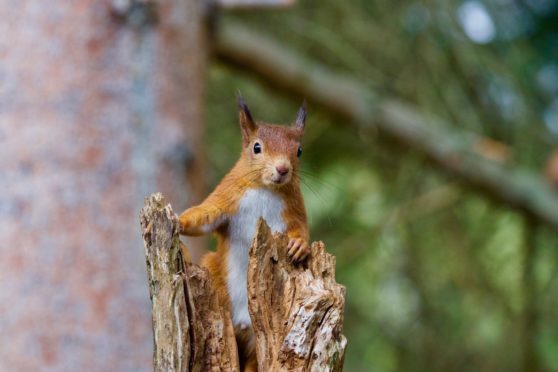Highlanders are being encouraged to sign up as red squirrel ‘spotters’ as part of a study looking into the effects forest operations is having on the species.
The study, led by researcher Dr Louise de Raad at Inverness College UHI, will also evaluate the effectiveness of a number of methods – currently being used by researchers – in helping to mitigate the impacts of works on the species.
A series of artificial nest boxes have since been placed in woodlands near Inverness to help observe red squirrel activity with trial cameras attached to capture tens of thousands of images – showcasing under what circumstances they use these shelters.
The project has been brought forward in partnership with Forest Enterprise Scotland (FES), an agency of Forestry Commission Scotland.
Preliminary results from the study show that operations during the breeding season have had a limited impact on squirrels. Females continued to breed successfully, while drey use and home ranges did not appear to change in response to forest operations.
Researchers are now eager to draft in volunteers from across the Highlands to sift through the thousands of images to help identify the protected species.
Dr de Raad said: “This is an exciting opportunity for the public to get involved with scientific research and conservation and the best thing is that you can do it from home, even if you only have limited time available. Anybody who can recognise a squirrel is able to give invaluable support to our project that will allow us to find out more about how to best protect our remaining red squirrel population.”
Fewer than 120,000 red squirrels remain in Scotland due to competition, disease and Habitat loss.
Volunteers can register for the Highland Red Squirrel Project on www.mammalweb.org.
